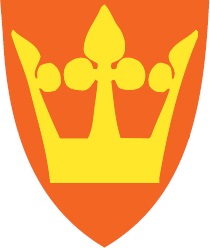Vestfold County: archaeological site detection using satellite images

The county
The County of Vestfold, situated in the South of Norway, is the smallest and one of the most densely populated Norwegian counties. Vestfold County Council is a regional public authority in charge of education, public transport, county roads, culture, public health, as well as the management of a particularly rich cultural heritage. Indeed, Vestfold County was a centre of power during the Scandinavian Viking Age. Several of the greatest archaeological discoveries from the Viking Age have been made here.
The challenge
The modern demands for efficient land use (road infrastructure, agricultural production, mining, energy sources, etc) are exerting a growing pressure on cultural heritage sites. When considering new infrastructure developments, Vestfold County Council needs to ensure these do not conflict with known and potential archaeological sites (invisible above ground).
To identify the latter, the County conducts archaeological field surveys, as well as excavation works in some cases. However, the traditional mapping methods, mainly based on chance discovery and poor positioning, meant that such maps could not be trusted when planning new infrastructure. The County sought to develop more cost-effective, non-intrusive methods of carrying out these assessments.
The satellite solution
CultSearcher, a piece of software that provides computerised assistance in the analysis of satellite images, allows archaeologists to detect and locate circular structures as e.g. burial mounds and ring ditches which may date back to 1 500-2 500 years ago. Even though the remains are buried, they affect crop growth by leaving ring-shaped marks in the fields that can be detected from space.
CultSearcher was developed and tested over several years in cooperation with the Norwegian Directorate for Cultural Heritage who also has funded the project. The system is fully operational since 2008, and continuously enhanced to improve the detection methods. The Norwegian Coumputing Center has been central in developing the software for CultSearcher.
The result
Over 30 new ring ditches surrounding a grave mound have been discovered in the last three years in Vestfold. The system gives archaeologists a valuable first layer of information that can guide them as to whether or not to begin site excavations, or alternatively, infrastructure works. The risk to miss certain buried sites is minimised, and their location on site maps is more reliable, enabling territorial planners to take better-informed decisions.
Using satellite images – which have been integrated in the County’s Geographic Information System – is also a valuable information and communication tool for dialoguing with land owners where such remains may be located.
On the basis of the Vestfold experience, the Norwegian Directorate for Cultural Heritage envisages a roll-out of the solution on a national level in order to establish the system as an integrated working tool in cultural heritage management.
“By having easy access to information about where it will be possible to find archaeological remains we can go into a dialogue and help finding a good solution at an early stage in the planning process.”

